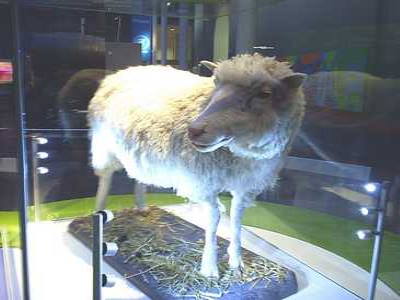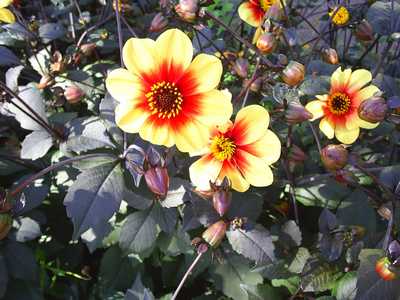Royal Mile
A Walk Down the Royal MileEsplanade and Castle HillThe LawnmarketHigh StreetThe CanongateAbbey StrandThe Lawnmarket
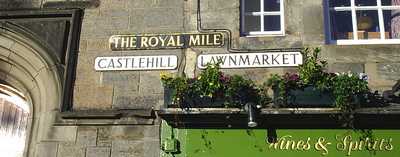
Street signs
Leaving Castle Hill, our walk now takes us down to the Lawnmarket, which is the oldest part of the Old Town. The original settlement here developed both within the shadow and protection of the Castle. The Lawnmarket's name derives from "land market" where produce from the surrounding countryside was sold. A cloth market was also established here in 1477, one of 15 market sites chartered by James III within the city. This vibrant and colourful market continued to trade here until around the late 1700s.
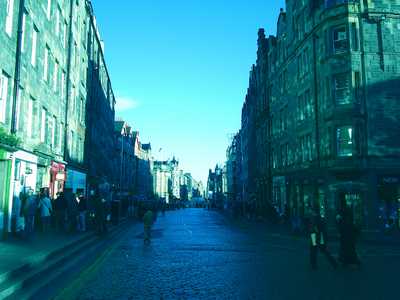
View eastwards down the Lawnmarket
The Lawnmarket also boasts some of the best preserved examples of closes, courtyards and 'land' developments that remain within the city.
The Ensign Ewart Pub

Ensign Ewart Pub
The Ensign Ewart Pub is the closest pub to the Castle. It claims to be the highest pub in the city centre and offers that after a hard night in the pub, going home is all "downhill". The pub takes its name from Charles Ewart, who single-handedly captured the standard of the famous French Invincibles at the Battle of Waterloo in 1815. His grave is marked by a granite block a little further uphill on the Esplanade. The pub forms part of Milne's Court (1690) and it is believed that a pub existed on the site at least from, and probably before, that date.
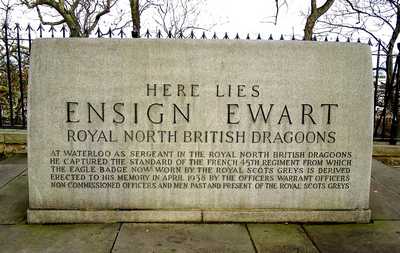
Ensign Ewart's Grave
Milne's Court
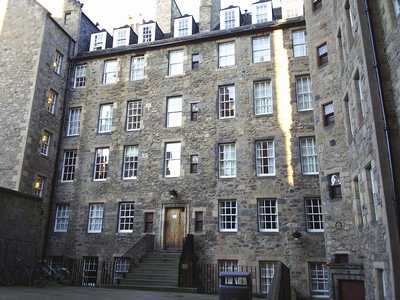
Milne's Court

Passageway
This courtyard was built in 1690 by Robert Mylne and refurbished in 1966 to 1970 by the University of Edinburgh as student accommodation. It is a good example of the tall tenements that were necessitated by the limited space available in the Old Town.
James Court

James Court
Following an earlier fire, James Court dates from around 1725 and is named after its builder James Brownhill. Many wealth and influential people lived here, including the writer James Boswell (who also brought Dr Samuel Johnston here) and David Hume (philosopher). The buildings were again destroyed by fire and replaced in 1857.
Lady Stair's Close and Writer's Museum
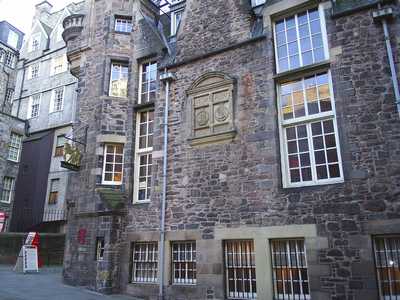
Writer's Museum
Originally built in 1622 and bought by Lady Stair in 1719, this building currently houses a. Writers' Museum dedicated to the work of three of Scotland's most famous writers, Robert Burns, Robert Louis Stevenson and Sir Walter Scott.
Gladstone's Land
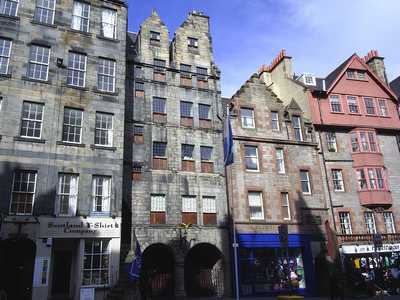
Gladstone's Land
Gladstone's Land is an excellent example of an Old Town tenement. It was bought by Thomas Gledstanes, a wealth local cloth merchant, who extended it in 1620. He let out different parts of the six storey building to people from different social classes of the time. Having been condemned by the city authorities, the building was saved from demolition in 1934 and following restoration can now be visited as a National Trust property.
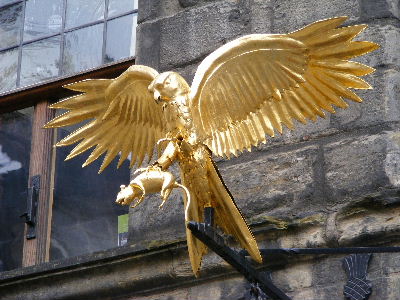
Golden Hawk which marks out Gladstone's Land
Wardrop's Court

Wardrop's Court
Check out this interesting pair of blue dragons over Wardrop's Court. The premises here were at one time occupied by the Incorporation of Baxters (bakers).
Deacon Brodie
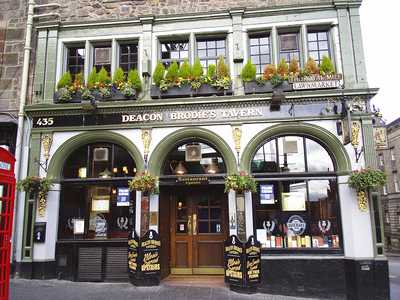
Deacon Brodie's Tavern
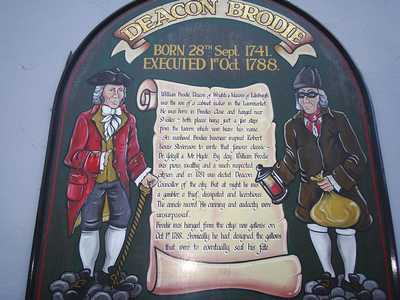
Wall Mural
A real life cabinet-maker, William Brodie was elected a Deacon Councillor of the City of Edinburgh in 1781. By day he was an outwardly respectable citizen and pillar of society, but by "night he was a gambler, a thief, dissipated and licentious." To support his lavish lifestyle Brodie would copy the keys of his wealthy clients and return at night to rob them. He escaped to Amsterdam in the Netherlands after being recognised at the scene of one of his crimes only to be caught and returned to Scotland.
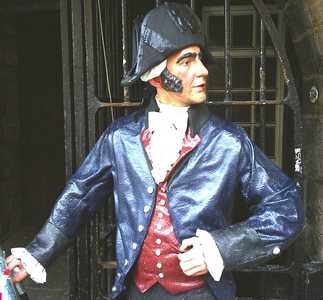
Deacon Brodie
He was hanged from the city's new gallows at the Tolbooth (which ironically it is said he had a hand in designing) on 1 October 1788. Such was the public interest in the case that it was said to have been attended by a crowd of over 25,000.
However, the story does not end there. The story goes that Brodie bribed the hangman to ignore a metal collar he was wearing and that he had also inserted a flexible tube into his throat in an attempt to prevent the drop from being fatal. Immediately after the execution, Brodie's body was spirited away to a rendevouz with a French surgeon in the hope that it might be revived. Here however the plot thickens even further . While it is claimed that Brodie did indeed perish and that his body was buried in an unmarked grave in Buccleuch Parish Church, rumours however were later to circulate in the city that he had been seen alive and well and living in Europe.
It is said that the story of Deacon Brodie may have served as the inspiration for Robert Louis Stevenson's story, "The Strange Case of Dr Jekyll and Mr Hyde". (However, more recently the author Ian Rankin has suggested that the genesis of that particular story lies in the tale of the notorious Edinburgh wizard, Major Thomas Weir.)
Deacon Brodie's Tavern, at the corner of the Lawnmarket and Bank Street, is a virtual a stone's throw away from Brodie's Close where William Brodie inherited his father's business.
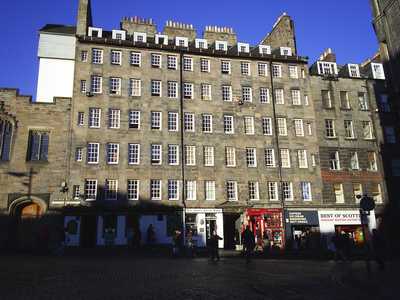
Tall Lawnmarket tenements
Continue to the High Street
